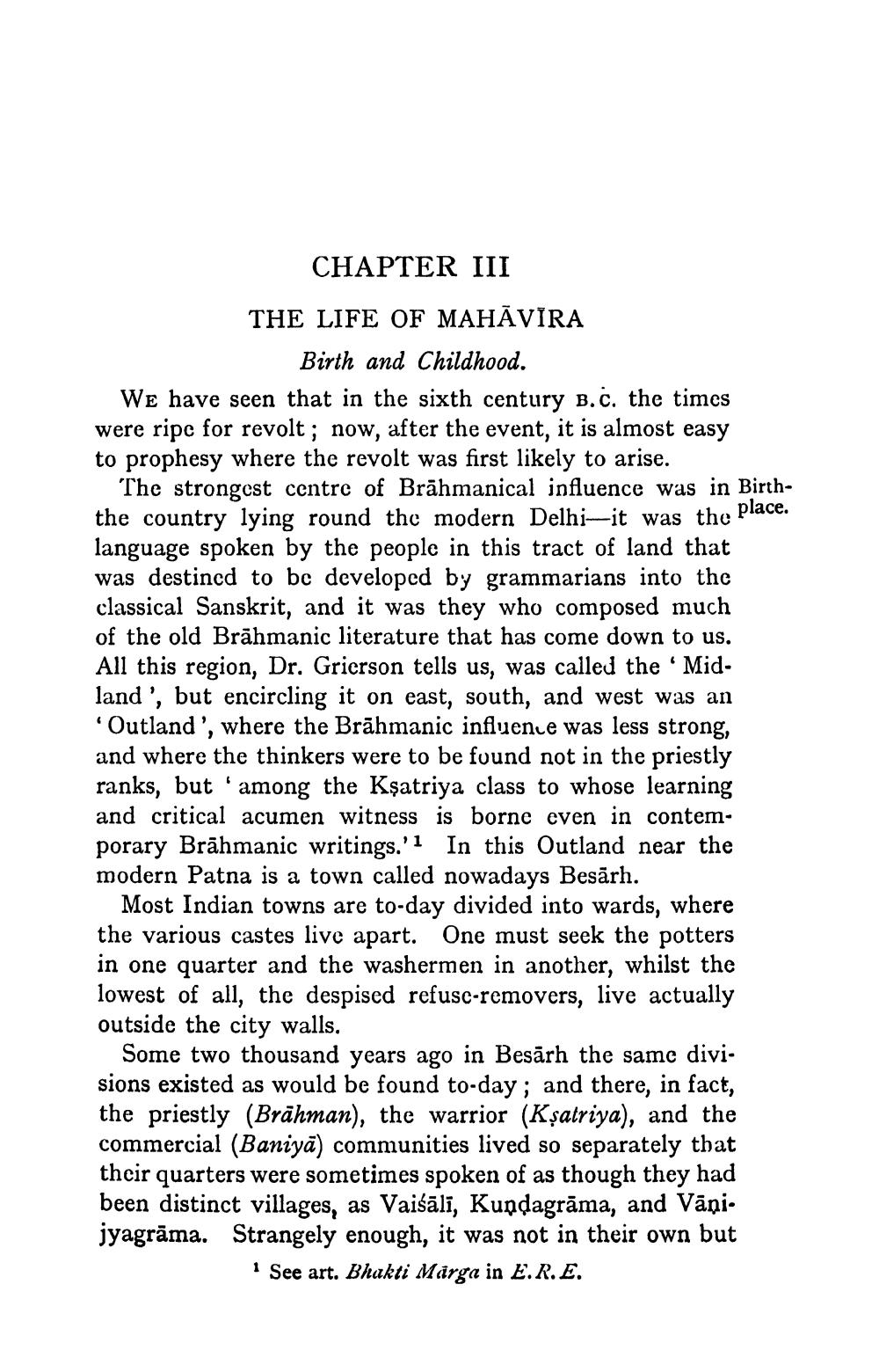________________
CHAPTER III
THE LIFE OF MAHAVIRA
Birth and Childhood. We have seen that in the sixth century B.c. the times were ripe for revolt; now, after the event, it is almost easy to prophesy where the revolt was first likely to arise.
The strongest centre of Brāhmanical influence was in Birththe country lying round the modern Delhi-it was the place. language spoken by the people in this tract of land that was destined to be developed by grammarians into the classical Sanskrit, and it was they who composed much of the old Brāhmanic literature that has come down to us. All this region, Dr. Grierson tells us, was called the 'Midland', but encircling it on east, south, and west was an
Outland', where the Brāhmanic influence was less strong, and where the thinkers were to be found not in the priestly ranks, but 'among the Kşatriya class to whose learning and critical acumen witness is borne even in contemporary Brāhmanic writings.'1 In this Outland near the modern Patna is a town called nowadays Besārh.
Most Indian towns are to-day divided into wards, where the various castes live apart. One must seek the potters in one quarter and the washermen in another, whilst the lowest of all, the despised refusc-removers, live actually outside the city walls.
Some two thousand years ago in Besārh the same divisions existed as would be found to-day; and there, in fact, the priestly (Brāhman), the warrior (Kșatriya), and the commercial (Baniyā) communities lived so separately that their quarters were sometimes spoken of as though they had been distinct villages, as Vaiśālī, Kundagrāma, and Vāņi. jyagrāma. Strangely enough, it was not in their own but
" See art. Bhakti Marga in E.R.E.




